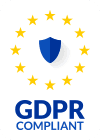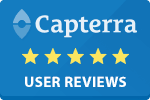How to create a Sales Battlecard (Templates + Tools)
Sales battle cards are essential tools to win deals and beat competition. Competitive Battlecards help sales teams quickly and effectively communicate the strengths and weaknesses of their products compared to competitors. Originally developed in the early 2000s, battle cards have evolved from simple paper documents to dynamic digital tools. Nowadays most companies have battlecard templates that they use to enhance their sales team performance. This guide will provide an in-depth look at sales battle cards, including templates, examples, and best practices for creating and using them. Before you dive in feel free to try our free battlecard generator tool and see how your brand compares to your competitors.
Free Sales Battlecard Generator Tool
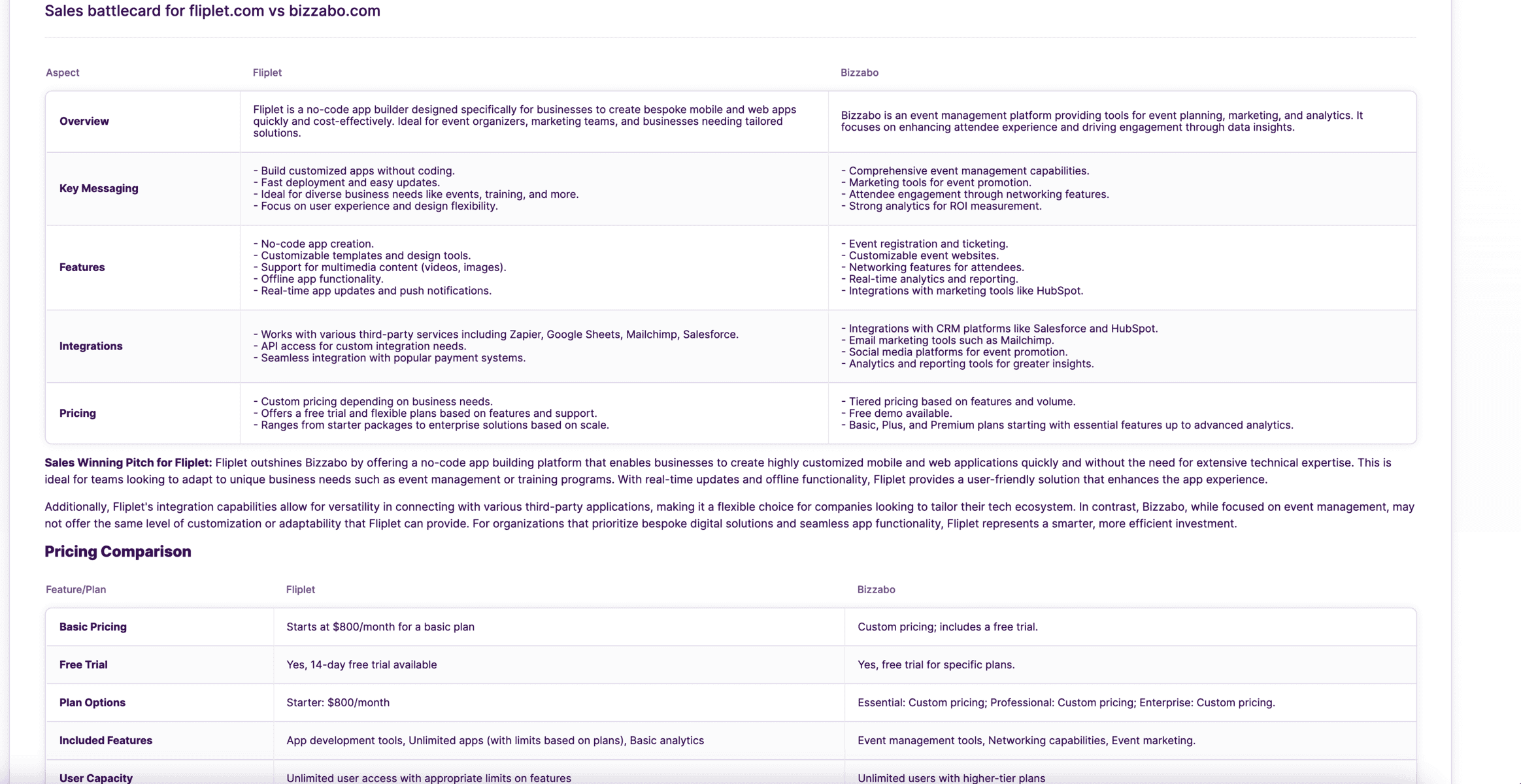
Create a free battlecard for your brand vs competitor
Enter your brand and competitor website URL to get battlecard results
What are Battle Cards in Sales?
A sales battlecard is a powerful tool in the world of sales. It's essentially a concise document that contains essential information about your competitors, their products or services, and how your offerings compare. Think of it as a strategic cheat sheet that equips your sales team with the knowledge they need to engage effectively with prospects and customers. In this section, we'll explore the fundamentals of competitive sales battlecards, including who creates them, who uses them, and why they are vital in the competitive landscape of sales.
Main Types of Sales Battle Cards
Sales battle cards come in various types, each tailored to specific needs within the sales process. The use of them at the right moment is key to succeeding in each activation and adoption by a sales team. Here are the main categories:
Competitive battlecards
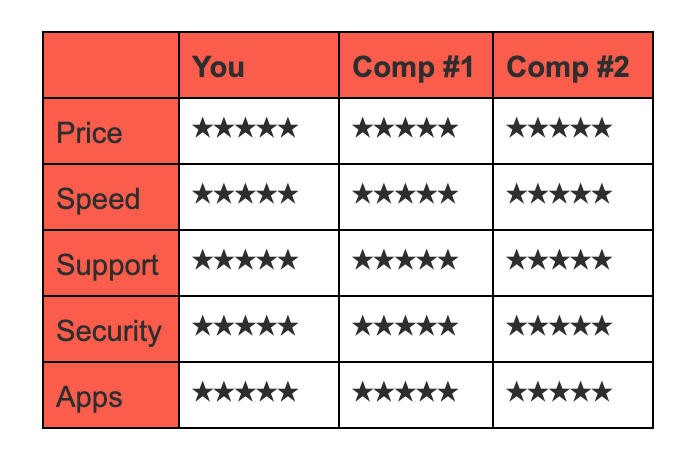
Definition: Competitive battle cards are reference materials used by sales teams to gain insights into their competitors’ products, strengths, and weaknesses. They equip sales reps with the knowledge needed to position their own offerings effectively in competitive sales situations.
When to Use: Competitive battle cards are invaluable during competitive sales situations. They help sales reps understand competitors’ strengths and weaknesses, enabling them to craft compelling pitches and respond effectively to competitive objections.
Example: In a sales negotiation with a potential client, a salesperson can use a competitive battle card to showcase how their product outperforms a competitor’s offering in terms of features and pricing.
Marketing Battle Cards
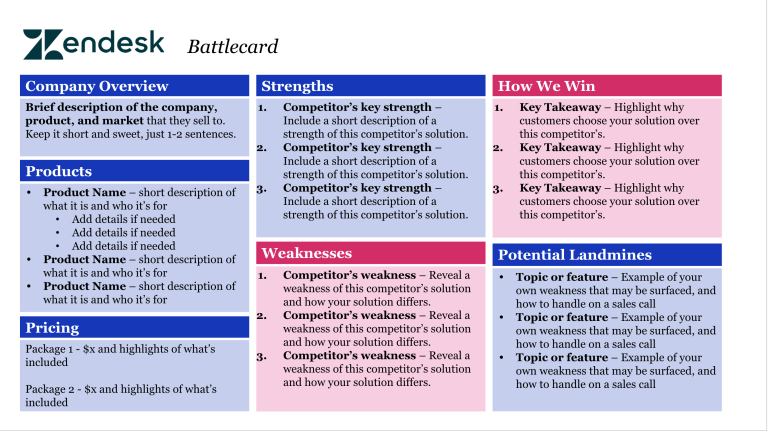
Definition: Marketing battle cards serve as guides that align sales and marketing efforts by providing consistent messaging, value propositions, and campaign strategies. They ensure that sales reps convey marketing-approved information to prospects.
When to Use: Marketing battle cards are most useful when aligning sales and marketing efforts. They guide sales reps on delivering consistent messaging, value propositions, and campaign strategies.
Example: Sales reps preparing for a product launch can refer to marketing battle cards to ensure that their communication aligns with the marketing team’s messaging.
Product Battle Cards
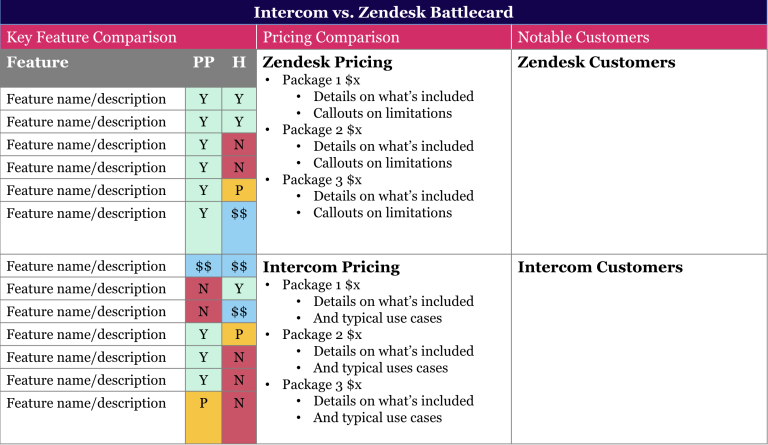
Definition: Product battle cards provide comprehensive information about a company’s products or services. They equip sales reps with in-depth knowledge, enabling them to present and demonstrate products effectively.
When to Use: Product battle cards are essential for equipping sales reps with in-depth knowledge about their own products or services. They come into play during sales presentations and product demonstrations.
Example: A sales rep conducting a product demo can utilize a product battle card to highlight key features, benefits, and use cases, showcasing the value of the product to the prospect.
Customer Objection Battle Cards
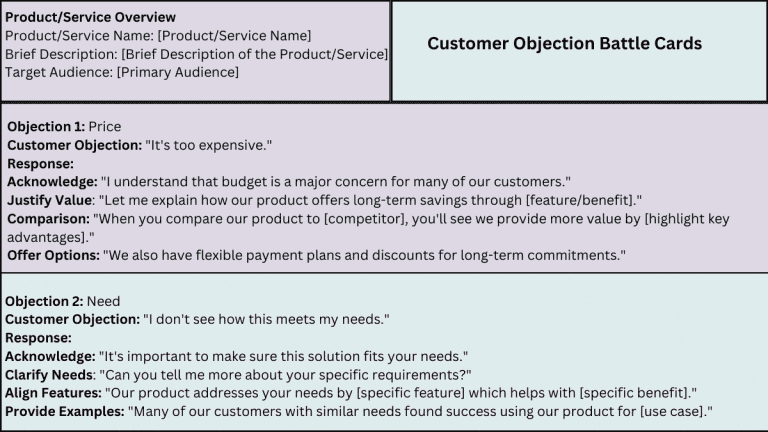
Definition: Customer objection battle cards focus on common customer objections and provide responses to address them effectively. They help sales reps prepare for potential challenges and turn objections into opportunities. These cards are vital for maintaining confidence and control during sales conversations.
When to Use: Customer objection battle cards are used when sales reps anticipate or encounter objections from customers. They are particularly useful during initial contact and negotiation phases.
Example: A sales rep can use a customer objection battle card to respond to a prospect’s concern about pricing, highlighting the product’s superior value and ROI.
Feature Comparison Battlecard
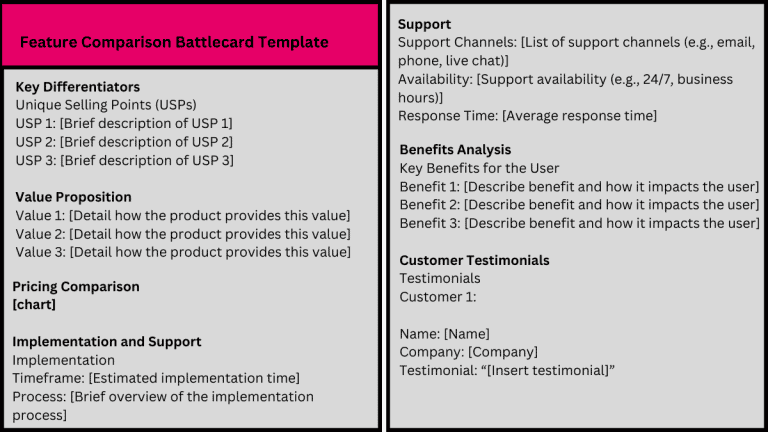
Definition:
Feature comparison battle cards help sales reps compare their offerings with those of competitors. This aids in highlighting the advantages of their product or service.
When to Use: Feature comparison battle cards are ideal during the demonstration phase or when a prospect is evaluating multiple options.
Example: A sales rep can use a feature comparison battle card to show how their product has more advanced features than a competitor’s offering.
Question-Based Battle Cards
Definition: Question-based battle cards are tailored to address the most common and critical queries that prospects might raise during the sales process. These cards compile a variety of frequently asked questions along with concise, well-crafted answers, ensuring that sales representatives can respond confidently and promptly to any query.
When to Use: These battle cards are invaluable when initiating conversations with potential clients, during product demonstrations, or while addressing objections in real-time. They serve as a quick reference guide to help navigate challenging discussions and are particularly useful in scenarios where anticipating client concerns is key to maintaining momentum.
Example: A sales representative consults a question-based battle card before a product demo. This preparation allows them to swiftly address inquiries about pricing, functionality, and competitive advantages, ensuring that every client question is met with a clear and consistent response.
Use Case-Based Battle Cards
Definition: Use case-based battle cards offer detailed insights into how a product or service has been successfully implemented in real-world scenarios. They focus on practical examples, outlining specific challenges, the solutions provided, and the measurable benefits achieved, thus demonstrating the product’s effectiveness in addressing particular client needs.
When to Use: These battle cards are especially useful during client presentations, product demonstrations, or case study discussions where concrete evidence of success is required. They help prospects visualise the practical application of the product in contexts similar to their own, thereby building credibility and trust in the solution’s capabilities.
Example: In a client meeting, a sales rep leverages a use case-based battle card to share a detailed story of how their solution helped another client overcome a similar challenge. By outlining the problem, the implemented solution, and the resulting benefits, the rep effectively illustrates the product’s real-world impact, making a compelling case for its adoption.
Free Sales Battlecard Templates for Powerpoint
Here are some free templates to help you get started with creating your sales battlecards:
Sales Battlecard Powerpoint Template
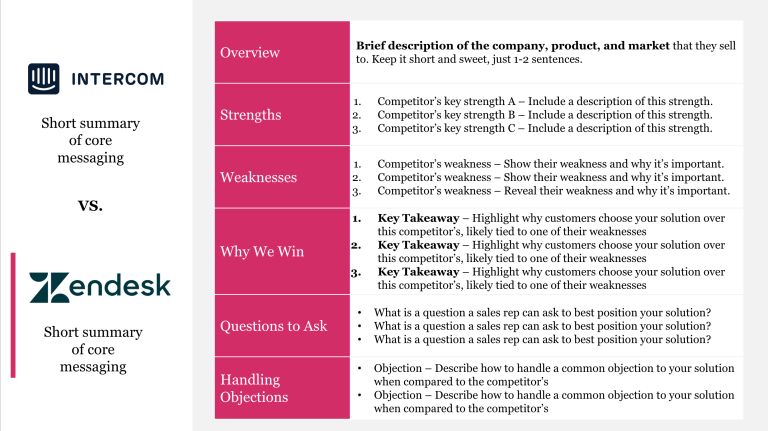
This template focuses on sales strategies, including competitive analysis and objection handling.
Product Battle Card Template for powerpoint
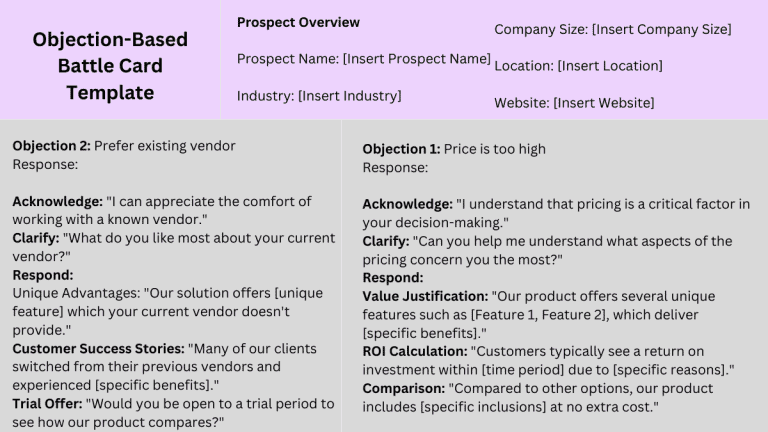
This template is designed for highlighting product features, benefits, and use cases.
Competitive Battlecard Template
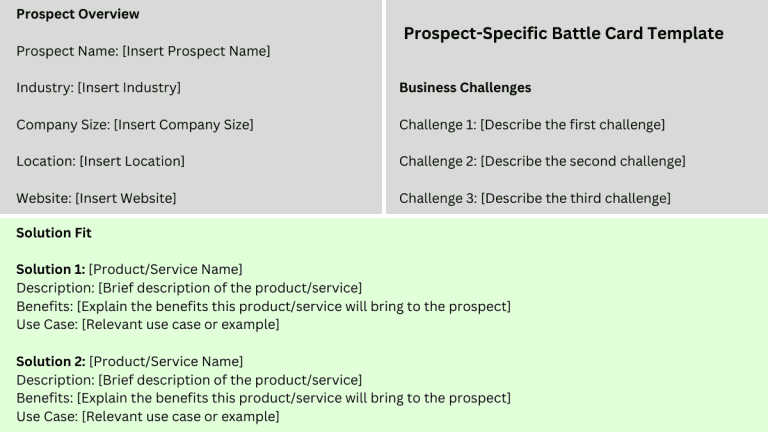
This template helps in analyzing competitors and crafting strategies to counteract their strengths.
The Importance of Competitive Battlecards
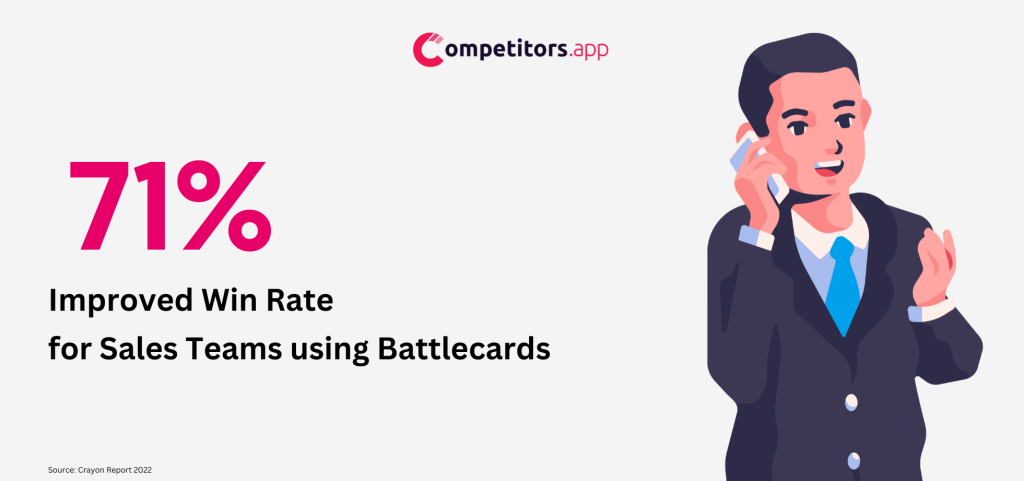
Battle cards play a pivotal role for several compelling reasons:
1. Empowering Sales Teams: Battle cards provide sales teams with readily accessible information about competitors, products, and strategies. This helps salespeople to engage confidently with prospects and customers.
2. Competitive Edge: In a competitive marketplace, having a thorough understanding of competitors’ strengths and weaknesses can give a sales team a significant edge. Battle cards help sales reps position their offerings effectively.
3. Consistency in Messaging: Battle cards ensure that sales messaging remains consistent across the organization. This consistency is crucial for building a strong and unified brand image.
4. Enhanced Product Knowledge: For sales reps, in-depth product knowledge is essential. Battle cards equip them with the information they need to showcase product features and benefits effectively.
5. Efficient Training: Onboarding new sales team members becomes more efficient with the use of battle cards. They serve as valuable training tools, accelerating the learning curve.
6. Improved Customer Conversations: Battle cards guide sales reps on how to handle common objections and questions. This results in more productive and effective customer interactions.
7. Scalability: As sales teams grow, maintaining consistent messaging becomes increasingly challenging. Battle cards help scale sales efforts while ensuring uniformity.
8. Sales Enablement: Battle cards are a critical component of sales enablement strategies. They facilitate collaboration between sales and marketing teams, aligning their efforts.
How are Sales Battle Cards Used in Marketing?
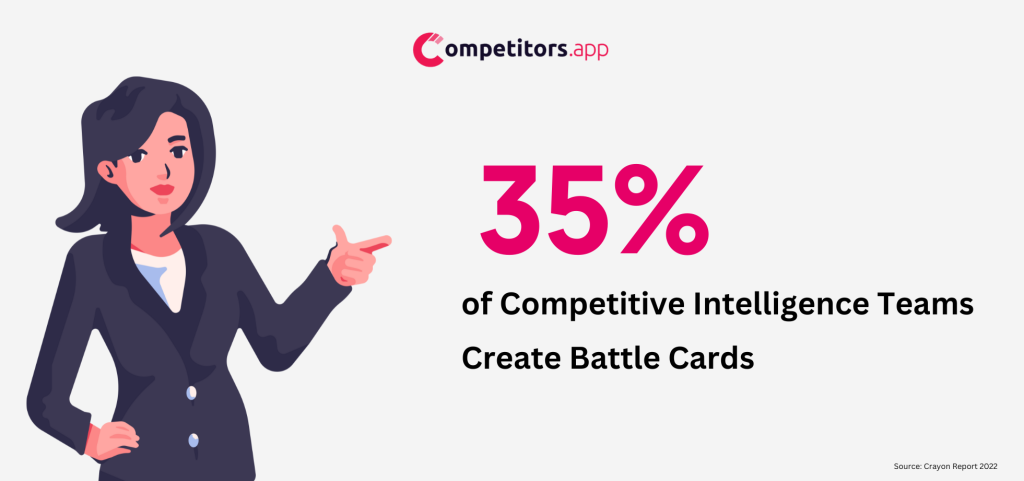
Sales battle cards are essential tools not just for sales teams but also for marketing departments. They bridge the gap between these two critical functions, ensuring a unified approach to market strategy and customer engagement. By aligning sales tactics with marketing strategies, battle cards enhance overall business effectiveness. Here’s how they are utilized in marketing:
- Develop Targeted Marketing Campaigns: Battle cards offer valuable insights into competitors’ strengths and weaknesses, as well as your own unique selling points. Marketing teams can leverage this information to craft targeted campaigns that directly address customer pain points and highlight competitive advantages. These campaigns are more likely to resonate with the target audience, increasing engagement and conversion rates.
- Create Compelling Content: Battle cards provide a wealth of information that can be transformed into compelling content. Marketing teams can develop blog posts, whitepapers, case studies, and social media content that tackle common customer objections and demonstrate the superiority of your product or service. This content not only supports the sales process but also helps in building brand authority and trust.
- Enhance Competitive Positioning: Understanding the competitive landscape is crucial for effective marketing. Battle cards equip marketers with detailed knowledge about competitors, enabling them to position your offerings more strategically. This enhanced positioning can be reflected in all marketing materials, ensuring a consistent and persuasive message across all channels.
- Train Marketing Teams: Battle cards serve as valuable training resources for marketing teams. By studying these cards, marketers can gain a deeper understanding of the competitive environment and customer needs. This knowledge allows them to develop more effective marketing strategies and tactics, ultimately supporting the sales team in closing deals.
What is included in a sales battlecard?
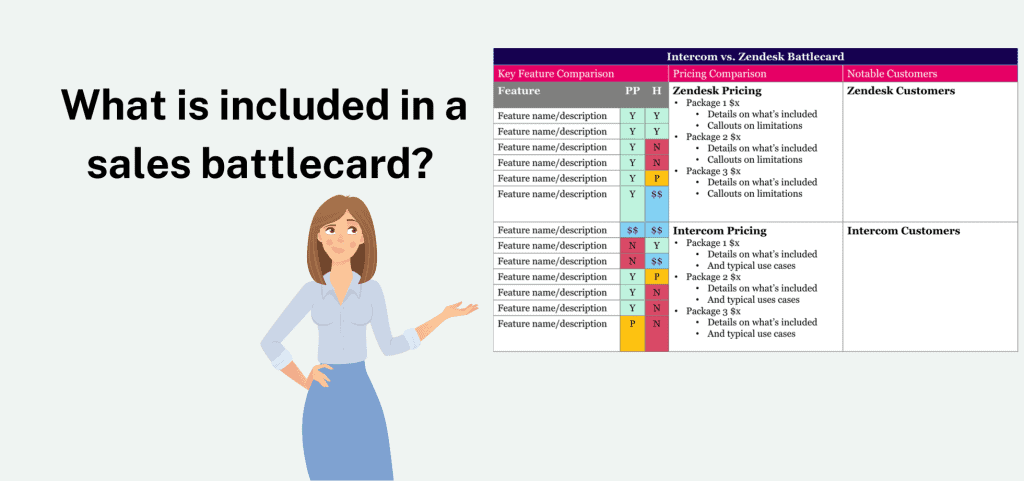
A well-structured Sales Battlecard Template is your secret weapon for outperforming the competition. Each element plays a crucial role in helping your sales team excel. All elements should be included for a succesful battle card. The person creating the battlecard though shouldn’t rely on his own input but facilitate the collection of inputs from all different teams.
Competitor Information: Knowing your rivals’ strengths and weaknesses arms your sales team to position your products effectively against theirs.
Product Insights: Deep knowledge of your own offerings allows your team to highlight key features and benefits, making your solution irresistible.
Target Audience Analysis: Understanding your ideal customers’ needs ensures your sales reps can tailor their pitches for maximum relevance.
Messaging Framework: Crafting persuasive messages and value propositions equips your team to articulate your unique value convincingly.
Objection Handling: Strategies for overcoming objections help your reps address concerns and maintain customer confidence.
Sales Playbooks: Guided approaches provide a roadmap for your sales reps, ensuring they navigate each stage of the sales process effectively.
Case Studies: Real-life success stories demonstrate how your solutions have solved similar challenges, instilling trust in potential customers.
Competitive Analysis Tools: Integration of data from competitive analysis tools keeps your team informed about competitors’ moves in real time.
Visual Aids: Infographics and visuals make complex information easy to understand, enhancing your team’s communication.
Sales Collateral: Access to relevant materials empowers your reps with the resources they need to close deals efficiently.
By including these elements in your battlecard template, you equip your sales team with a comprehensive toolkit to engage prospects confidently and convert leads into loyal customers.
💡 Tip: Great battle cards are the ones who are created with sales in mind. Don’t hesitate to create a feedback loop with sales to add or remove elements from your battlecards.
Simpler or more complex versions of a battle card might work depending on the organization, industry and product nature.
How to Create a Sales Battle Card
Our video shows how anyone can create effective competitive battlecards for product and sales in just a few minutes. As a salesbattlecard example in this video we use adidas. You’re able to see how we collect the data, analyze competive insights and genenerate battlecards for sales enablement.
Sales battlecard examples: What do battle cards look like?
Illustrating the concept of sales battle cards is best done through practical examples. To provide you with a firsthand experience, we’ve added a few examples featuring a variety of sales battlecards. These samples showcase the diverse formats and content in real-world battle cards used by successful sales and competitive intelligence teams.
Explore Our Sales Battlecard Examples
- Slide through the examples below to gain insights into how various organizations structure their battle cards to address different sales scenarios.
- From competitor analysis to product-focused battle cards, these examples offer a glimpse into their versatility.
- If you’d like to dive deeper into any specific example or even download a battle card template to kickstart your own sales initiatives, simply click on the relevant slide.
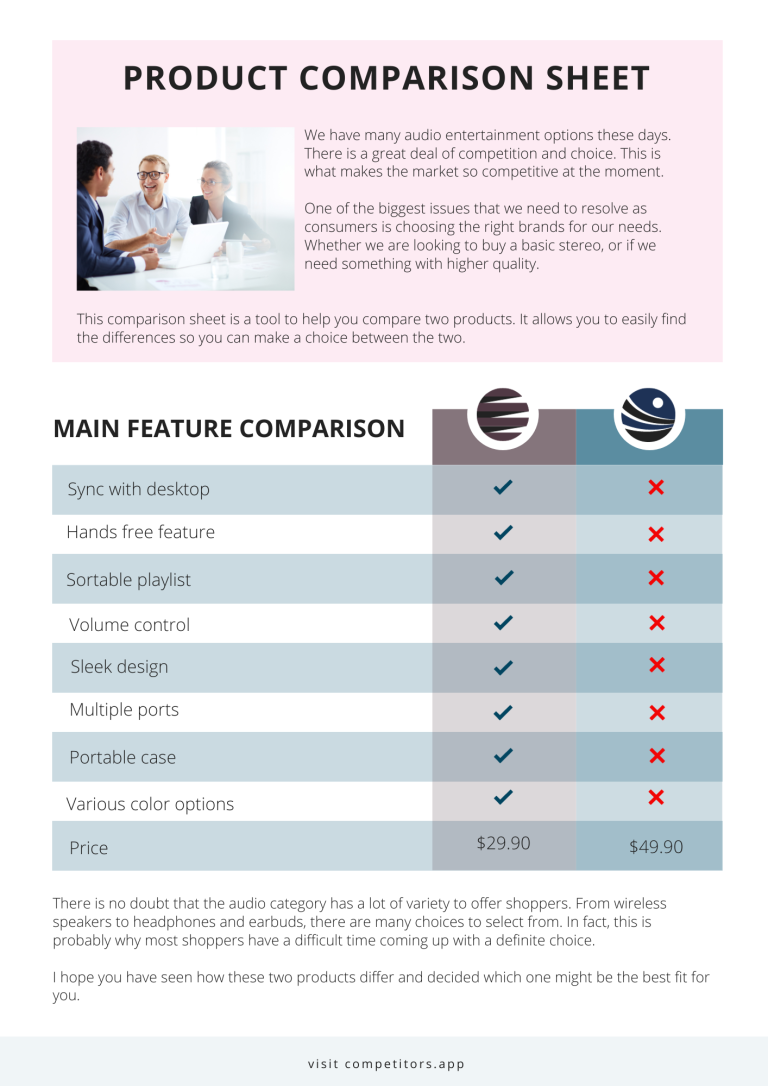

Best Practices for creating a winning battlecard
When you are creating battlecards you can’t just create them and expect your sales reps to use them. Remember the role of a sales person is full on meetings so delivering something useful is of utmost importance. To deliver a useful competitive battle card follow these best practices:
Regular Updates: Keep your battle cards up-to-date with the latest information about your products, competitors, and market trends. Stale battle cards can do more harm than good.
Simplicity is Key: Make your battle cards easy to understand. Avoid jargon and complex language that can confuse your sales team.
- Accessibility: Ensure that your sales team can access battle cards easily, whether it’s through a centralized platform or mobile access.
Training: Provide thorough training on how to use battle cards effectively. Your sales team should understand when and how to leverage them
Measurement: Implement ways to measure the impact of battle cards on your sales performance. Are they helping close deals? Use data to fine-tune them.
By adhering to these best practices, your sales battle cards become valuable assets that empower your team to tackle challenges head-on and win more deals.
Sales Battlecards are only the first tip for winning deals
Creating a battle card is just the start—its real power lies in how you use it. To make the most of it, integrate it into your sales process by:
- Researching prospects to uncover pain points and competitors early.
- Identifying competitors and using the battle card to analyze their strengths and weaknesses.
- Tailoring messaging to highlight your solution’s advantages.
- Handling objections with pre-planned responses.
FAQS
1. What is a Battle Card?
A battle card is a concise document that provides sales teams with critical information about products and competitors to improve sales effectiveness.
2. What is Another Name for a Battle Card?
Another name for a battle card is a sales enablement card.
3. How do sales battle cards differ from other sales enablement tools?
Sales battle cards are specific and concise documents that focus on competitive analysis and help sales teams address competition effectively. Unlike other sales enablement tools, which may cover a broader range of topics, battle cards are tailored to provide key insights about competitors, enabling sales teams to navigate competitive landscapes efficiently and close competitive deals.
4. How can sales battle cards help sales teams improve their performance?
Sales battle cards empower sales teams with in-depth knowledge about competitors, enabling them to tailor their pitches, handle objections effectively, and emphasize the unique value of their offerings. This leads to more informed and persuasive sales conversations, ultimately improving win rates and sales performance. It's calculated that sales battle cards can help companies win 20% more competitive deals.
5. How can sales battle cards be tailored to specific industries or markets?
Sales battle cards can be customized to address industry-specific challenges and market dynamics. By including industry-specific insights, case studies, and competitive analysis, you can ensure that battle cards are relevant and effective in specific contexts.
6. Are there any legal or ethical considerations when using sales battle cards in a competitive market?
Using sales battle cards ethically requires ensuring that the information presented is accurate and not misleading. Additionally, respect for competitors' intellectual property and confidential information is essential to maintain ethical practices in competitive markets.
7. Are there any software or tools available to help create and manage sales battle cards?
Yes, there are software tools available, including AI-powered solutions like Competitors App, that facilitate the creation, organization, and management of sales battle cards. These tools streamline the process, making it easier to keep battle cards up-to-date and accessible for the sales team.
8. How do you measure the success or impact of sales battle cards on sales performance?
Measuring the impact of sales battle cards involves tracking metrics such as win rates, deal sizes, and sales cycle duration. Analyzing these metrics before and after implementing battle cards can provide insights into their effectiveness.
9. How do sales battle cards contribute to competitive intelligence and analysis?
Sales battle cards are a valuable source of competitive intelligence. They provide up-to-date information on competitors' strengths, weaknesses, and strategies, enabling organizations to continuously analyze and adapt their sales approach to gain a competitive edge.
10. What challenges can sales battle cards help sales teams overcome?
Sales battle cards help sales teams overcome challenges related to competitor knowledge, objection handling, and differentiation. They provide quick access to information that allows sales reps to address these challenges confidently.
11. How frequently should sales battle cards be updated to remain effective?
Sales battle cards should be updated regularly to ensure their relevance. The frequency of updates may vary depending on the industry and the pace of change in the competitive landscape. Generally, they should be reviewed and refreshed at least quarterly.
12. What are some competitive battlecard examples?
- Product Feature Comparison Battlecard – Compares your product’s features against competitors, highlighting strengths and unique capabilities.
- Pricing & Cost Analysis Battlecard – Breaks down pricing structures, long-term savings, and overall value to counter cost objections.
- Objection Handling Battlecard – Provides responses to common competitor-related objections with supporting evidence.
- Customer Testimonials & Use Case Battlecard – Showcases real-world success stories to demonstrate practical benefits and credibility.
- Market Positioning Battlecard – Highlights industry standing, key differentiators, and strategic advantages.
- Partnership & Collaboration Battlecard – Details key partnerships that enhance product value and competitive positioning.
13. What is a battlecard in sales?
A battlecard in sales is a concise, strategic document that helps sales teams effectively position their product against competitors. It typically includes:
- Competitive Comparisons – Side-by-side feature and pricing breakdowns.
- Objection Handling – Pre-prepared responses to common customer concerns.
- Value Propositions – Key selling points and unique advantages.
- Customer Testimonials & Use Cases – Real-world success stories to build credibility.
- Market Positioning – Insights on how the product stands out in the industry.
Battlecards equip sales reps with quick, data-backed insights to navigate sales conversations, overcome objections, and close deals confidently.
